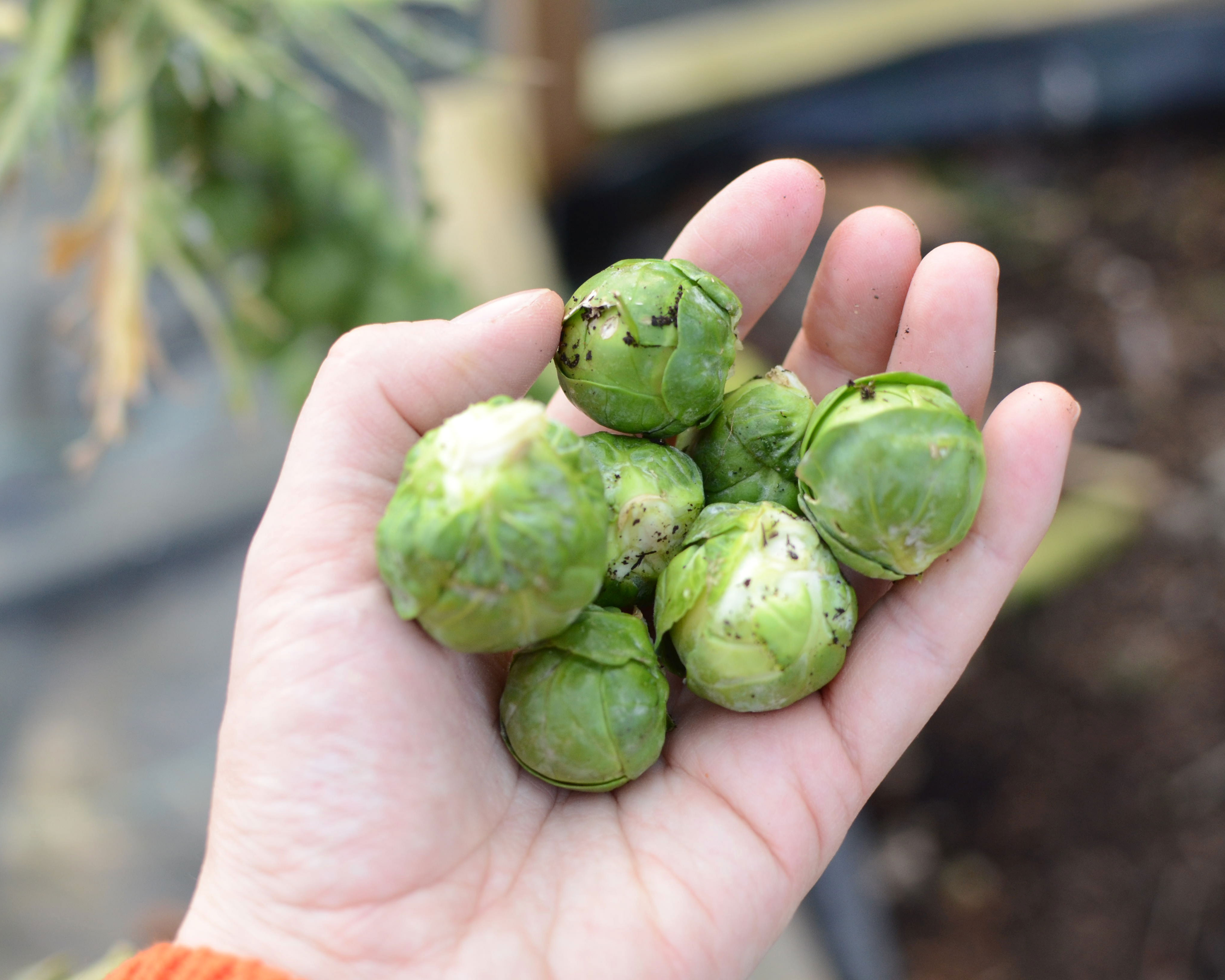When to harvest Brussels sprouts
Unsure when to harvest Brussel Sprouts? Follow our simple guide to picking this tasty seasonal crop


Knowing when to harvest Brussel sprouts is hugely important when making the most of this homegrown crop. Nutritious and loved by many, this festive favorite is packed with vitamins, fiber and can be boiled, steamed, stir fried or even sliced and added raw to salads, transforming many winter dishes.
If you grow Brussels sprouts, you will know that it is sown in spring and planted outside just a few weeks later. These 30 inch (75cm) tall vegetable plants are slow growers and take up to 100 days before being ready for harvest, though picking from October is typical.
Brussels sprouts cope well with cold conditions. In fact, according to Kris Collins at Thompson & Morgan, ‘their flavor will be improved if they are left exposed to the first frosts.’
This makes them an incredibly useful addition to the veg patch as they will continue cropping from fall through to the end of February.
Not sure what ready-to-harvest signs to look for? Then this simple to follow guide will tell you everything you need to know so that when you cook Brussels sprouts, you get the best flavor.
When to harvest Brussel sprouts
Slow growers but well worth waiting for, most Brussel sprouts are ready for picking from late October through to February. ‘Pick Brussels sprouts for immediate use when they are large enough for cooking, and still firm and tightly closed,’ says Stephanie Harrod of Harrod Horticultural.
Kevin Haggerty from Cedar Circle Farm adds, ‘As the sprouts come ready, harvest them from the bottom up, which is how they mature (the all-at-once harvesting of agribusiness is one reason store-bought samples taste so bad).'
Design expertise in your inbox – from inspiring decorating ideas and beautiful celebrity homes to practical gardening advice and shopping round-ups.
How do I know when Brussel sprouts are ready to pick?
You can pick Brussel sprouts when they are large enough for cooking (usually an inch or so wide). The heads should be firm when you squeeze them and green.
Do Brussel sprouts grow back after harvesting?
Brussel sprouts do grow back after harvesting, which means even just a couple of plants should give you plenty of heads to eat throughout fall and winter.
'Keep them picked and they’ll grow more!' says Kevin Haggerty from Cedar Circle Farm. 'Harvest sprouts in the home garden after the first or second frost, taking just those sprouts which are big enough, starting from the bottom up. Continue harvesting for as long as you can find more to pick.’
How long does it take Brussel sprouts to harvest?
Brussel sprouts are ready to harvest around 100 days after being sown, and this is typically from October. So, look to sow them in mid summer, and, for best results, pick after the first frosts.
How long do Brussel sprouts on stalk last?
Brussel sprouts on stalk will last in a cool place for a few weeks, or in your refrigerator off the stalk for a couple of weeks. These mini members of the cabbage family are brilliant for freezing, so you can always pick, blanche, bathe before plunging them into the deep freeze ready for when needed.
How can I improve my Brussel sprout harvest?
Removing a couple of leaves a week, especially if they are yellow, will help keep the plant productive, though leave the top ones in place. Many growers – commercial and homestead – insist on topping their Brussel sprout plants three or four weeks before the first harvest.
‘The reason for doing it is to send the remaining energy of the plant into sizing up your sprouts rather than into creating new leaf growth,’ says Kevin Haggerty from Cedar Circle Farm. 'Make sure the sprouts have formed on the stalk before removing the growing tip and top few leaves.'
Can you harvest Brussel sprouts that have opened out?
Known as sprouts that have ‘blown’, first spotting these on your carefully tended crop can be hugely disappointing but don’t despair, they can still be picked and taste delicious. This generally occurs when the plants have not been properly firmed into the soil and the roots loosened by the wind. A lack of nutrients can also cause the sprouting buds to open prematurely. Remedy this problem with regular doses of a high nitrogen liquid feed.

Journalist Jill Morgan has spent over 20 years writing and editing gardening, interior and property features. Titles she has worked on include The English Home, House Beautiful, Ideal Home, Houzz and Modern Gardens and she writes regularly for H&G as a Contributing Editor. Whilst she is a dab hand at renovation projects and DIY, she is happiest when out digging in the garden or planning a new border.